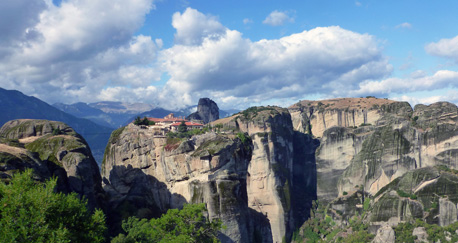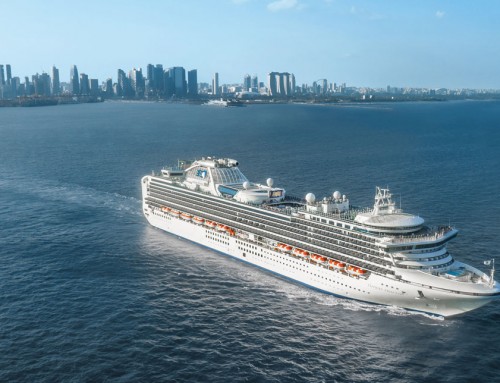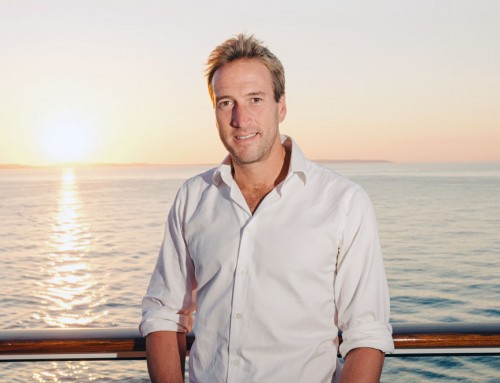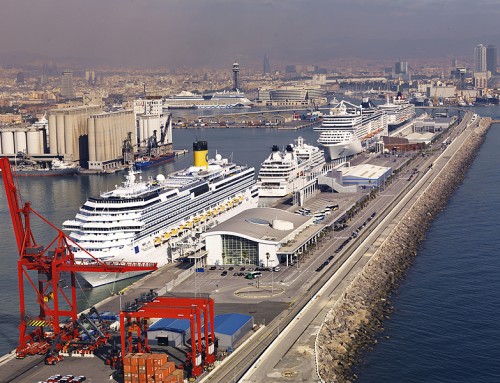 Discovering new sights and experiences is, as the name implies, an integral part of a journey with Voyages of Discovery – and I have enjoyed my share during the past few days on board.
Discovering new sights and experiences is, as the name implies, an integral part of a journey with Voyages of Discovery – and I have enjoyed my share during the past few days on board.
Whether re-visiting familiar cities for an opportunity to look with a fresh eye, or encountering somewhere for the first time, it has been a fascinating experience.
The major ports of call – Dubrovnik, Venice, Athens and, from tonight, Istanbul – are all places I have been before, but I found something new (to me) in each.
 After a walking tour of the streets and alleys of Dubrovnik, a ride to the top of Srdj Hill on the recently reinstated cable car provided an opportunity to look down on the old town and its harbour from above. On the 20th anniversary of the first bombardment, it also gave a chance to visit the small museum commemorating the group of patriots who defended the city from Serbian attacks during the 1990s war.
After a walking tour of the streets and alleys of Dubrovnik, a ride to the top of Srdj Hill on the recently reinstated cable car provided an opportunity to look down on the old town and its harbour from above. On the 20th anniversary of the first bombardment, it also gave a chance to visit the small museum commemorating the group of patriots who defended the city from Serbian attacks during the 1990s war.
What I can’t understand is why the four-hour excursion cost £70, compared with the £50 (also expensive) walking tour without the cable car. The return fare for the five-minute ride is about £9, and the refreshments offered – a glass of fruit juice and a small cake – can’t have added much to the bill.
With a shuttle bus from the port to the Pile Gate just £5 return, or even a €10 taxi ride (drivers and most shopkeepers and restaurants are as happy to accept euros as kuna) Dubrovnik is definitely a place to be explored on your own, preferably with time to walk around the city walls.
Although no visit to Venice would be complete without a pilgrimage to Piazza San Marco, our overnight stay offered a walking tour of the less-crowded alleys and squares of the San Polo district. However, having been advised to wear “conservative” dress, it was a disappointment not to be given a chance to enter some of the magnificent churches on the walk, such as the church of San Rocco, with its unique collection of Tintoretto paintings, or the vast brick-built complex of Santa Maria dei Frari, the city’s second-most important church. For £83, this was another expensive option then, although one which would be more difficult to undertake without a guide.
 Next morning a leisurely boat trip around the lagoon’s islands took us to the glassworks of Murano and to the colourful fishermen’s homes on Burano (above), plus a sight of the construction work on the tidal barriers designed to save La Serenissima for the future. At £40, this was value for money.
Next morning a leisurely boat trip around the lagoon’s islands took us to the glassworks of Murano and to the colourful fishermen’s homes on Burano (above), plus a sight of the construction work on the tidal barriers designed to save La Serenissima for the future. At £40, this was value for money.
 While it would have been perfectly easy to get on a train or hop on a bus from the cruise terminal in Piraeus to the centre of Athens, I joined more than 300 of Discovery’s passengers taking a £66 ship’s tour to the Parthenon and the new (well, two-year-old) Acropolis museum.
While it would have been perfectly easy to get on a train or hop on a bus from the cruise terminal in Piraeus to the centre of Athens, I joined more than 300 of Discovery’s passengers taking a £66 ship’s tour to the Parthenon and the new (well, two-year-old) Acropolis museum.
The Brits among us were left in no doubt either by our guide or by the museum’s displays, what the Greeks think of the fact that Lord Elgin removed some of the best sculptures from the site at the beginning of the 19th century, and that they think it is long past time they were returned from the British Museum.
Perhaps that was why the museum’s bookshop had plenty of guidebooks in German, French, Italian, Spanish and other languages, there was none available in English. All sold out? I’m not convinced.
Our other Greek ports of call have been undistinguished towns. Kalamata in the south-west Peloponnese may be famous for the quality of its olives, but there’s not much else to detain the visitor.
While many passengers set off for the ancient ruins of Messini (£50), I joined a £52 tour to Methoni – a walled city now largely overgrown but with the remains of a once-powerful fortress which has been under the control of Venetians and Turks through the centuries. Nearby, the sheltered bay of Navarino looked peaceful enough, but in the town of Pylos we saw a memorial to the last great sea battle ever fought by sailing ships, when French, Russian and English navies led by Admiral Codrington defeated a fleet from Turkey and Egypt.
 The highlight of a memorable catalogue of coach-trips came on Sunday, with an excursion from Volos to the Meteora monasteries.
The highlight of a memorable catalogue of coach-trips came on Sunday, with an excursion from Volos to the Meteora monasteries.
A tedious two-hour drive across endless plains filled with fields of cotton and burnt straw was rewarded with one of the most magical sights – six monasteries almost literally suspended in the air on vertical rock pillars. When they were built in the medieval 14th and 15th centuries, access was only by vertiginous climbs up sheer cliffs, or by hauling up goods and people hundreds of feet in baskets or nets attached to ropes which were replaced only when they broke “by God’s will.”
Nowadays, four of the monasteries are occupied by monks, two by nuns, and none of the communities contain more than 10 people. Hundreds of tourists descend on the UNESCO-listed site, however, now that twisting roads, pedestrian bridges and flights of concrete steps have made access comparatively easy.
We visited two: the monastery of Varlaam, whose 16th Century church has interiors completely decorated in Biblical frescoes which have been darkened by centuries of incense-burning; and the convent of St Stephen, where the church is just as old, but the recently-restored paintings shine like new.
The wall paintings were astonishing in their graphic and sometimes gory detail; outside the views of other monasteries, of caves carved into rock pinnacles, and across the plains hundreds of feet below to the towering mountains of the Pindus range were equally breathtaking.
For just £66 this was not only the most enjoyable trip of the cruise, it was by far the best value for money – and well worth the journey.
Back on the ship, Captain Alex Tkachuk announced that the next day’s planned maiden call at Myrina, on the island of Limnos, would have to be cancelled because forecast heavy winds would make tendering ashore too dangerous, and instead we would be heading straight through the teeth of the gales to Istanbul, arriving half a day earlier than planned.
Perhaps he should have joined us on the monastery trip, to say a few prayers to the gods of the weather.






Leave A Comment